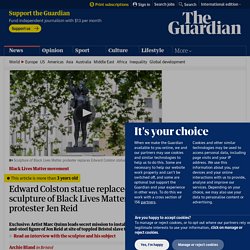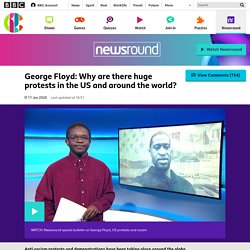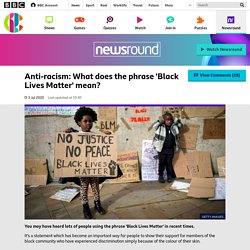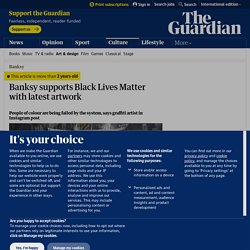

Edward Colston statue replaced by sculpture of Black Lives Matter protester Jen Reid. The statue of slave trader Edward Colston was replaced in Bristol on Wednesday morning – with a sculpture of one of the protesters whose anger brought him down.

The figure of Jen Reid, who was photographed standing on the plinth with her fist raised after the 17th-century merchant was toppled by Black Lives Matter demonstrators last month, was erected at dawn by a team directed by the artist Marc Quinn. The ambush sculpture is likely to reignite the debate over public statuary in the UK that began with the toppling of the Colston figure five weeks ago.
On Wednesday morning police said they had had no complaints and it was “a matter for Bristol city council”. Controversial statue of Edward Colston replaced by Black Lives Matter protestor - CBBC Newsround. Getty Images A controversial statue has been replaced by a sculpture of a Black Lives Matter protestor.

The original statue was of a man called Edward Colston, and in June, anti-racism protestors threw his statue into Bristol harbour. Some groups have been calling for the statue to be removed for many years. They said it's not right that Colston, who was a slave trader, should be celebrated in this way. Edward Colston: Why are people arguing about statues? - CBBC Newsround. Getty Images.

George Floyd: Why are there huge protests in the US and around the world? - CBBC Newsround. To enjoy the CBBC Newsround website at its best you will need to have JavaScript turned on.

Anti-racism protests and demonstrations have been taking place around the globe. The protests began in reaction to the death of a man named George Floyd in Minneapolis, in the United States, after he was stopped by police. Four officers were sacked and later charged in connection with his death. There followed several nights of protests - and some violent clashes between police and protesters - as demonstrations swept across cities in the US. Getty Images Protests first started in Minneapolis where a black man died in police custody after being knelt on by a white officer While many were peaceful, some places have seen rioting, looting and violence. However, in recent days the protests have been mostly peaceful, and some of the security measures such as curfews have now been lifted.
Anti-racism: What does the phrase 'Black Lives Matter' mean? - CBBC Newsround. Getty Images You may have heard lots of people using the phrase 'Black Lives Matter' in recent times.

It's a statement which has become an important way for people to show their support for members of the black community who have experienced discrimination simply because of the colour of their skin. How did 'Black Lives Matter' start? 'Black Lives Matter' has become an important statement phrase for many following the death of an African-American man called George Floyd, But it was first used widely back in 2013 after a teenage boy called Trayvon Martin was killed by a neighbourhood watch volunteer who did not face any punishment. Nobody involved in the Black Lives Matter movement is saying that only black lives matter, or that all lives don't matter, or that white lives don't matter.
Lots of people took part in protests following Trayvon's death and many turned to social media to speak out against what had happened. "It is a movement for equality and against racism" he said. Graffiti art on the side of a train in Belgium reads 'Please, I can't breathe' in memory of George Floyd. Banksy supports Black Lives Matter with latest artwork. Banksy has shown his support for the Black Lives Matter movement, saying “people of colour are being failed by the system”.

The graffiti artist wrote in an Instagram post: “At first I thought I should just shut up and listen to black people about this issue. But why would I do that? It’s not their problem, it’s mine. “People of colour are being failed by the system. The white system. “This is a white problem. Alongside the post is a painting of a vigil candle burning an US flag. Banksy’s identity has long been a closely guarded secret, but that has not stopped him from becoming one of the most prolific artists of the 21st century, gaining attention for his politically charged works.
Anti-racism protests were planned across the UK this weekend after the death in the US of George Floyd, despite ministers urging people to avoid mass gatherings. Floyd died after a white police officer held him down by pressing his knee into his neck in Minneapolis on 25 May. Taking a knee: Why are NFL players protesting and when did they start to kneel? National Football League commissioner Roger Goodell issued a 1 minute and 21 second apology on 5 June, following several years of debate within the NFL as well as among fans, Donald Trump and countless pundits who criticised Colin Kaepernick and other players' silent protests against police brutality.

Mr Goodell's message came nearly two weeks after the police killing of George Floyd, whose Memorial Day death and the killings of other black Americans have galvanised global protests against police violence and racism. But in the commissioner's message, Kaepernick — the former San Francisco 49ers quarterback who protested police brutality against black Americans by taking a knee during the national anthem — was notably absent. "We, the National Football League, admit we were wrong," the commissioner said. "We, the National Football League, believe Black Lives Matter. ... When did this all start? Your daily US politics newsletter Sign up Already have an account? Who protested? No. History Behind Photo of Martin Luther King, Kr. Kneeling.